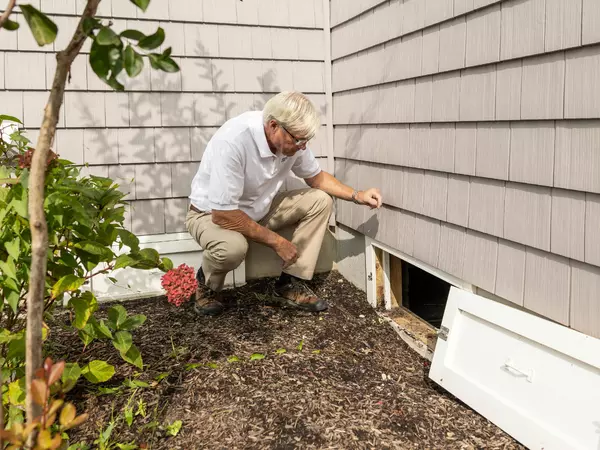10 Common Issues Home Inspectors Find in Nearly Every House
When it comes to buying or maintaining a home, knowledge is power, and few people know a property more intimately than a home inspector. According to a recent MSN article, there are certain problems that show up again and again, regardless of the home’s age or price point.
Here’s a breakdown of the 10 most common issues inspectors uncover and why they matter:
1. Electrical Problems That Could Spark Disaster
Electrical issues are among the most common—and dangerous—findings during inspections, showing up in nearly 75% of homes. Everything from outdated wiring to overloaded circuits can pose serious safety hazards. The MSN article notes that improper wiring leads to about 51,000 residential fires each year. While newer homes tend to have adequate power supply and outlets, older homes often rely on aging wiring that can no longer keep up with modern electrical demands.
2. Roofing Issues That Make Inspectors Cringe
Roofs top the list of inspection problems, with issues found in roughly 70% of all home inspections. Asphalt shingle roofs typically last 15–40 years, but extreme heat, heavy snow, and major storms can shorten their lifespan. Even small concerns—missing shingles, poor flashing, soft spots—can lead to major water damage if ignored.
3. HVAC Systems Running on Hope and a Prayer
HVAC systems work overtime, especially in older homes where ventilation is often insufficient. Inspectors frequently discover poor airflow, aging units, or attics that are insulated but not ventilated. These conditions can trap heat, strain the system, increase energy bills, and even lead to mold growth. When your house can’t “breathe,” your HVAC system ends up taking the hit.
4. Plumbing Problems That Flow Deeper Than Expected
Even minor plumbing issues can hide major problems beneath the surface. Slow drains, low water pressure, and small leaks often signal bigger concerns like deteriorating pipes or hidden water damage. Over time, leaks lead to warped floors, rotted subfloors, and mold—quickly turning a small fix into an expensive repair.
5. Windows That Just Can’t Seal the Deal
Windows take a constant beating from the elements, and inspectors frequently identify issues such as failed seals, drafts, or fogging. Poorly sealed windows can lead to higher energy costs and reduced comfort. They also allow moisture intrusion, which can damage window frames and walls over time.
6. Foundation Issues That Rock Your World
Foundation repairs aren’t just costly—they’re intimidating. In 2025, average repairs cost over $5,000, with many ranging significantly higher. Inspectors look closely for cracks, uneven settling, or moisture intrusion. Even small cracks can signal early structural movement. When the foundation falters, everything above it becomes vulnerable.
7. Safety Hazards Hiding in Plain Sight
Simple safety issues show up in nearly every inspection: loose handrails, uneven steps, cracked walkways, missing smoke detectors, or absent carbon monoxide alarms. These small oversights aren’t catastrophic, but they pose real risks. Thankfully, they’re also some of the most affordable fixes.
8. Drainage Problems That Create Perfect Storms
Poor drainage often goes unnoticed until heavy rain exposes it. Improper grading, clogged drains, or standing water near the foundation can cause long-term structural damage. According to the MSN article, drainage problems can reduce a home’s value by 10–15%. Water always finds a way—and without proper drainage, it often finds its way inside.
9. Gutter Systems That Just Don’t Cut It
Gutters serve as the home’s first line of defense against water intrusion, yet inspectors frequently find clogged, undersized, or damaged systems. A single rainstorm can produce thousands of gallons of roof runoff. If gutters can’t manage that volume, water ends up saturating soil around the foundation, potentially causing leaks and structural problems.
10. Ventilation Issues That Take Your Breath Away
Ventilation problems often fly under the radar but have major impacts on comfort, energy efficiency, and health. Poor airflow traps moisture, encouraging mold growth in attics, crawl spaces, and walls. Insufficient ventilation also affects heating and cooling costs, making a home harder to regulate year-round.
How I Can Help as Your Real Estate Agent
The home inspection stage can feel intimidating, but you don’t have to handle it alone. As your agent, I will:
✅ Attend the inspection and advocate for your interests
✅ Help interpret the findings in plain, understandable language
✅ Recommend trusted contractors and repair specialists
✅ Advise on which issues are normal, which are negotiable, and which are red flags
✅ Guide you through repair requests and negotiations to protect your investment
A strong inspection doesn’t just reveal problems—it helps you make confident, informed decisions.
If you’re thinking about buying or selling and want a knowledgeable professional by your side, I’m here to help every step of the way. Reach out anytime to get started.
Every move starts with a conversation
 Let's talk! I’ve proudly served the Greater Richmond area as a full-time Realtor for more than 19 years, and I’ve called Virginia home for over 25.
Let's talk! I’ve proudly served the Greater Richmond area as a full-time Realtor for more than 19 years, and I’ve called Virginia home for over 25.
My goal is simple: to help you reach yours.
Jason Burke
Categories
Recent Posts







